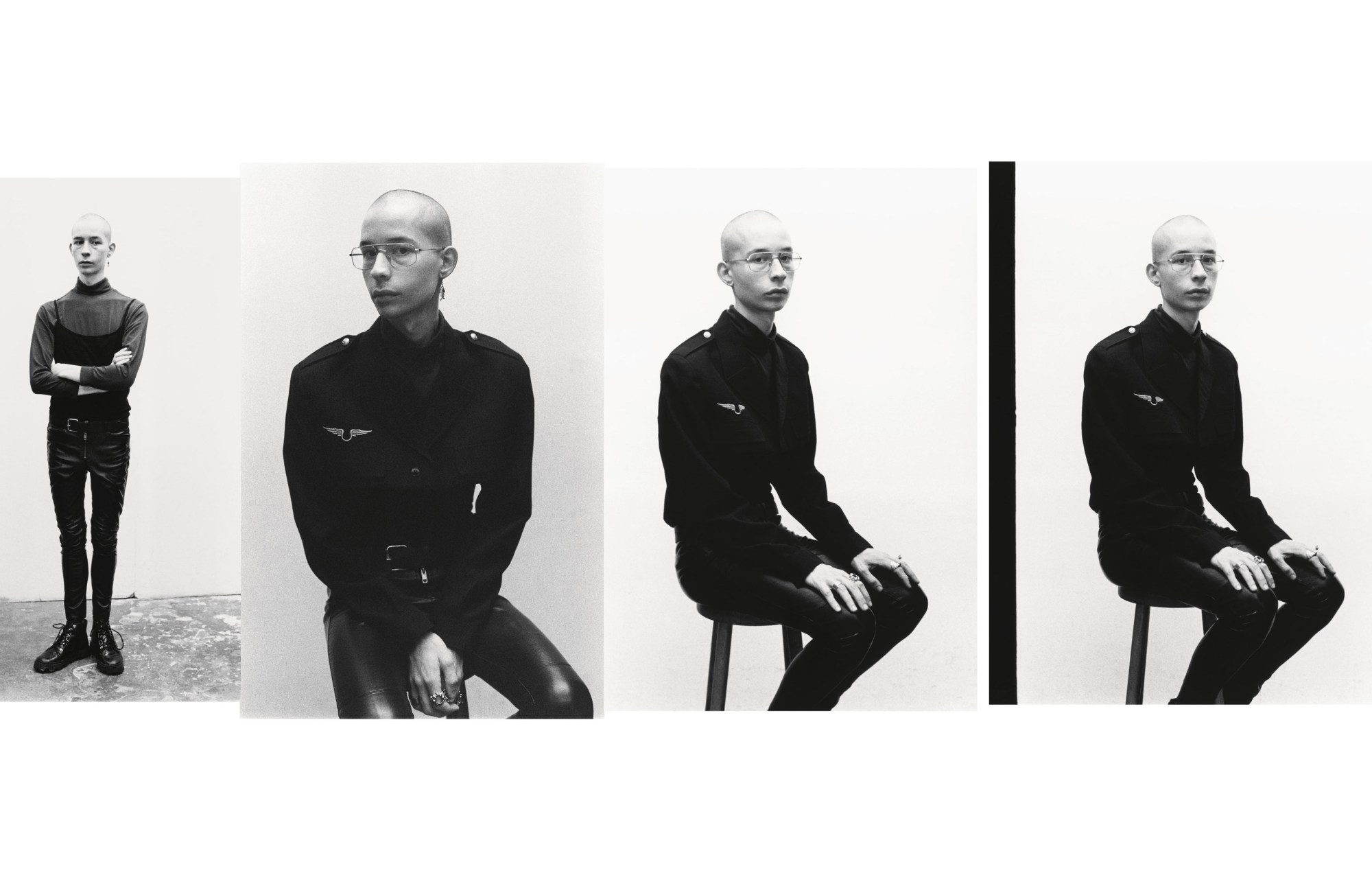This article originally appeared in The Radical Issue, no. 351, Spring 2018.
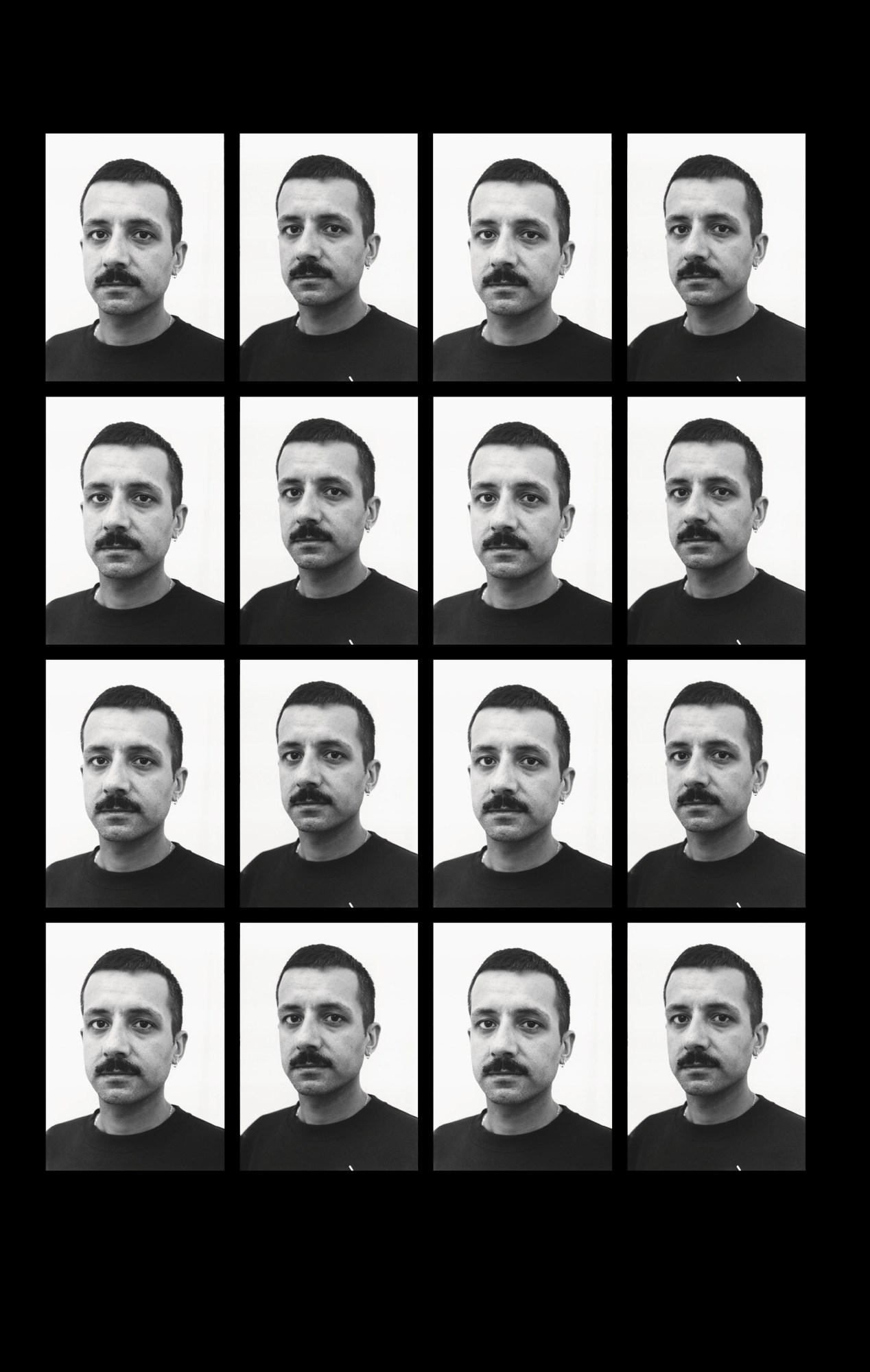
Prem Sahib
British artist Prem Sahib can trace his earliest art-related memory back to the female sexual organ. “I remember the pleasure I took painting my friend wearing a diamanté necklace with the word PUSSY on it for my GCSEs,” he says. He’s still making art about sex, just these days it’s more likely to be about cottaging. “It’s about the relationship we have with the spaces we inhabit,” Prem says. “It’s about how we become socialised by the material world and our environments, and form ideas around self and community.” His work explores clubbing and queer culture, and the boundaries between the public and private, desire and repulsion, intimacy and community. Minimalist in form, he eschews representation, allowing his interventions of everyday objects and materials to stand in for the body. Take Rumble, a series of glass panels sandwiched together to encase flattened Uniqlo puffa jackets, reminiscent of male bodies squashed together and pressed up against the glass on the tube. “My background has shaped my work quite directly in the past,” Prem says, of growing up in Southall. “My experience of sexuality growing up in the suburbs. Being mixed race and coming from the background I have has also made me more aware of the lack of diversity in the art world.” In 2015 Prem took over both the lower and upper galleries of the ICA with his first solo exhibition Side On, bringing the gay underground to the public institution. It was a thoughtful meditation on illicit thrills and gay rituals, referencing openly queer spaces such as saunas, bathhouses and public lavatories. “It’s got weirder,” he says, of his work’s evolution since. “I’ve embraced making things that might not seem like they fit in the rest of my practice. For me, art means having the freedom to share something that you don’t fully understand.”
Text Tish Weinstock

Cynthia Daignault
What do you like the most about painting? I love that I am working on a continuum that stretches to the very beginning of human history. You often paint in a series. Why? A single painting is like a poem. The multi-panel works are like a film. It’s like the difference between music and noise. What would you like to change about the art world? The vast majority of commercial galleries still mainly just show men, and a woman’s artwork sells for a fraction of her male counterpart. The glass ceiling for women in art is real, and progress has been slim and slow. I really want to see an art world that represents women and people of colour are equally.
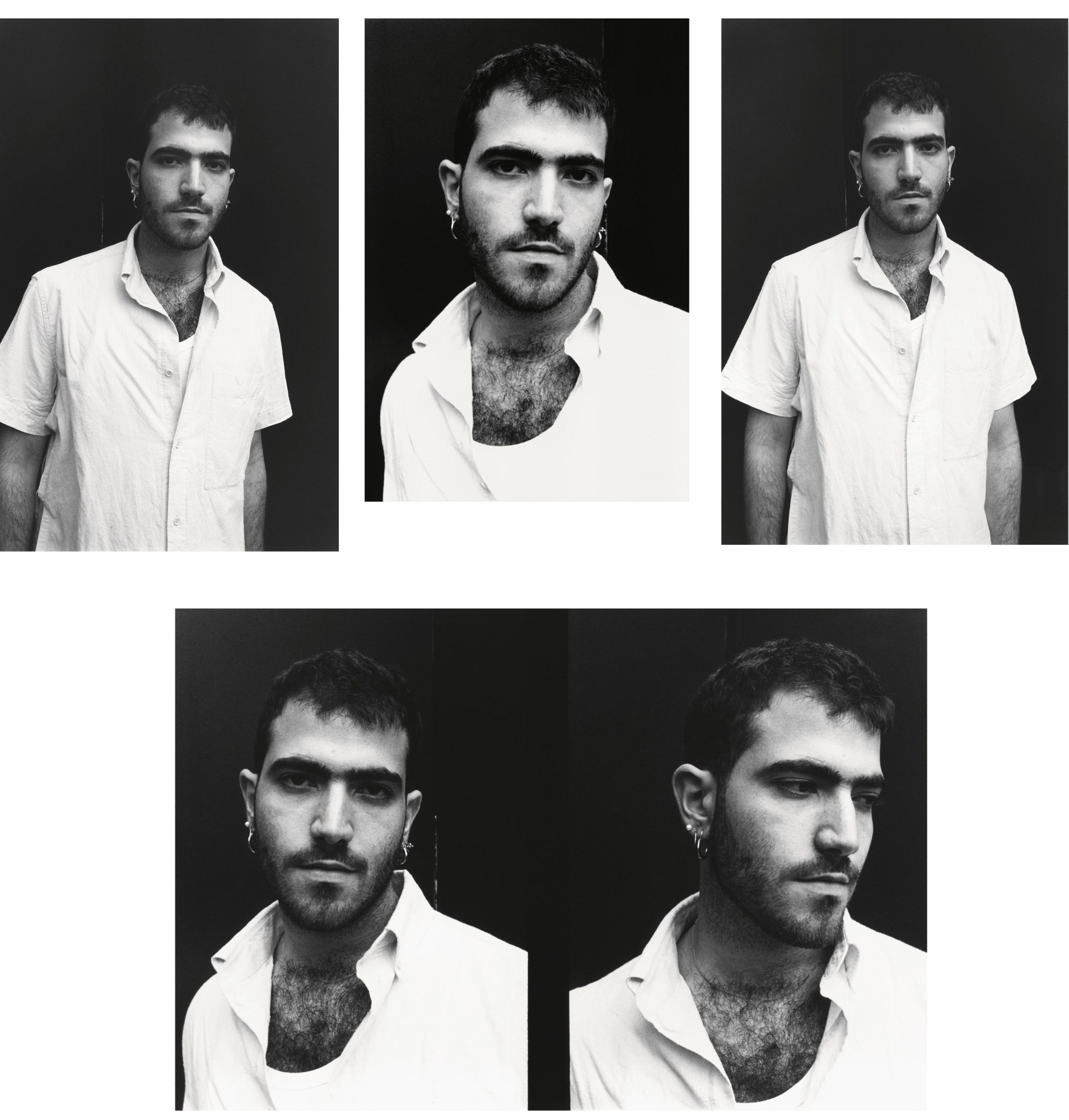
Orestis Lazouras
What made you want to be an artist? The ability to glorify ugly things. What do you say when people ask you what your art is about? A sensual dance. What do you feel people misinterpret most often about your work? I find my work very romantic, and I’m not sure if that comes across as much as I would like. That breaks my heart and makes it even more romantic. What are the most important things happening in the art world today? I’m going to talk in the context of Cyprus. During the financial crisis most galleries closed and artist run spaces (such as mine, Neoterismoi Toumazou) were what gave our community the opportunity of exploring our practices free from any pre-assigned structure. Do you find non-creative people attractive? All I care about is someone having kind eyes. The theme of the issue is about breaking the establishment. Discuss… Be true to yourself. I don’t believe in having to follow any rules as long as you’re being respectful and appreciative of your freedom.
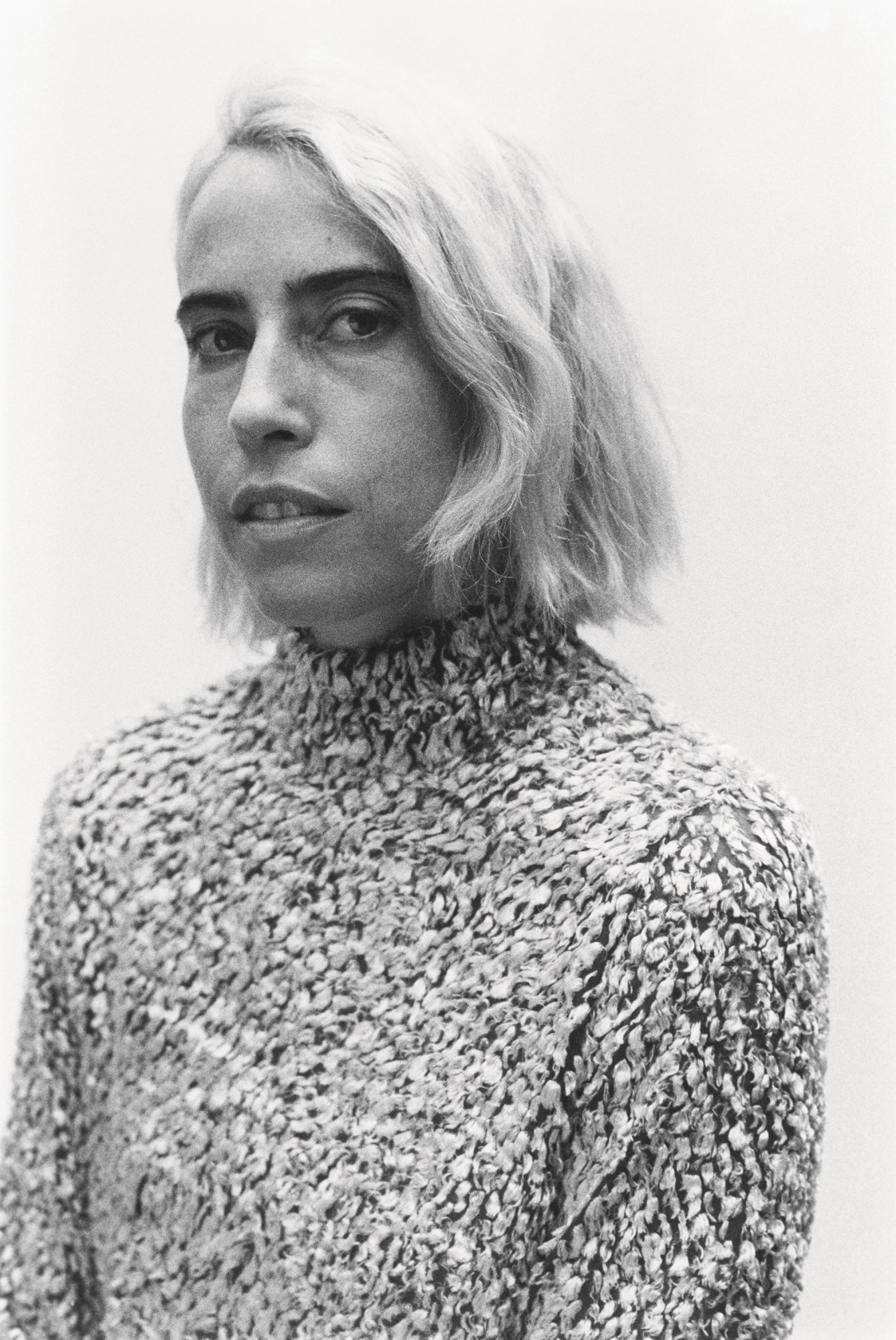
Michele Abeles
What made you want to be an artist? Art is a way to map a variety of connections. How would you describe the themes of your work? It’s the way I perceive the world. I have a nervousness that leads to rapid juxtapositions. It’s like punk rock. You scream, but you modulate a little. What do you find most interesting about the camera? A camera is what’s in between. It translates. It’s a nomad. What do you like most about photography? It’s complicated, messy and uncontrollable. Do you like having your picture taken? I like being asked. I am always curious to see what I look like as an image and what the producers of this image think an artist should look like. The theme of the issue is about breaking the establishment. Discuss… We won’t become free unless we accept destruction.
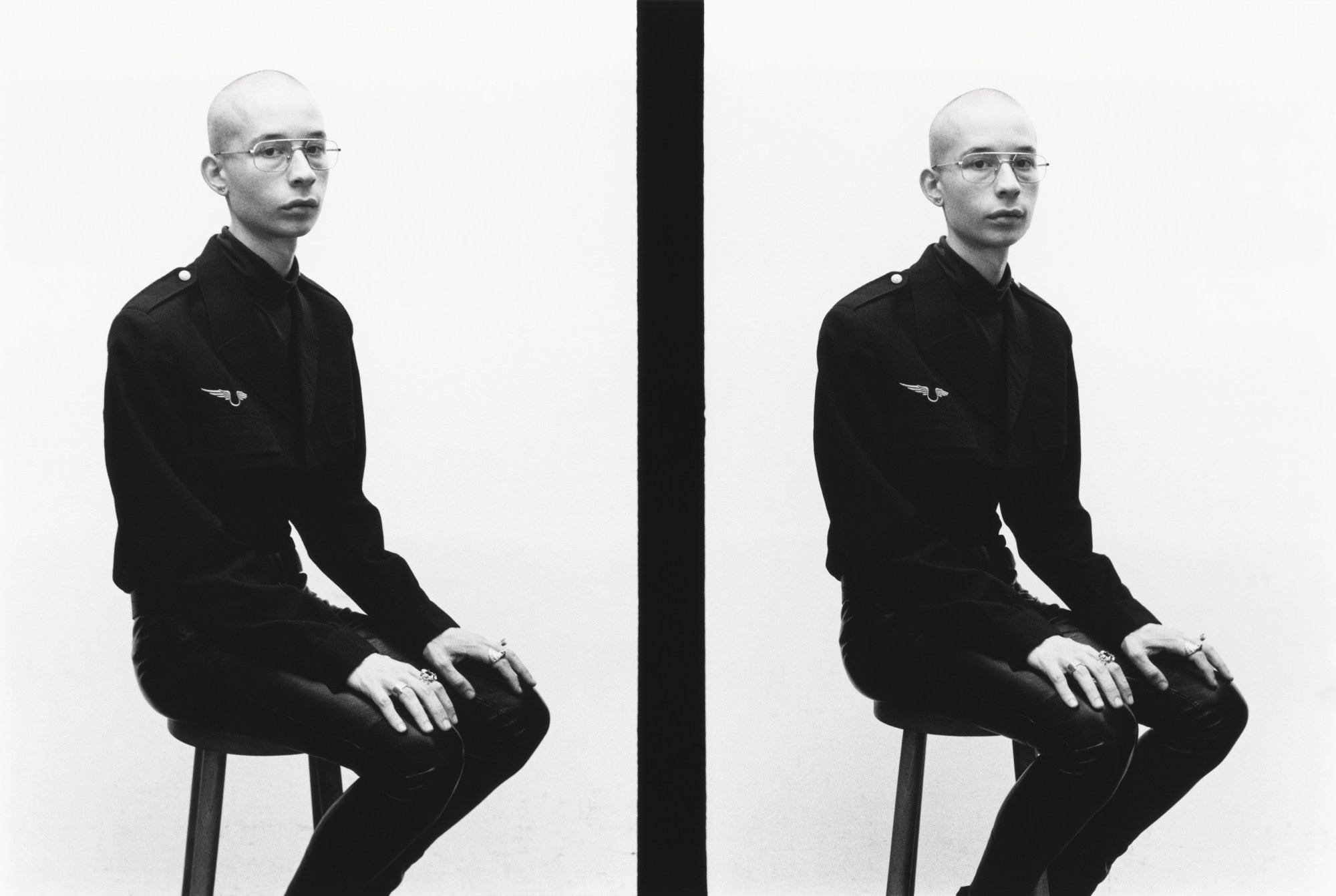
Gaby Sahar
What made you want to be an artist? I wasn’t good at anything else. How would you describe the themes of your work? Identity and visibility politics, queer culture, gentrification, public and private space, south London, capitalistic men, men in general, Palestinian culture. You do both paintings and performances; how do the two relate for you? The characters in my paintings are often a reflection of the characters I become in my films and performances. What do you think are the most important things happening in the art world today? I think the art world is finally listening to different voices, voices from the margins. Different genders and cultures seem to finally be able to participate. What makes you happy about making work? Feeling free. The theme of the issue is about breaking the establishment. Discuss… I think one of the most powerful things an individual can do in a corporate structure is stay 100% true to yourself. Don’t let a structure change you. Don’t conform.

Appau Jnr Boakye-Yiadom
What makes you happiest about making work? Ideas and dialogue. What does a day in the studio usually look like for you? Once all the tedious admin is done (which unfortunately takes up more time than I would like) my day spans from procrastination to impulsive action. In-between I’m reading, listening, watching, dancing and singing. How would you describe the themes of your work? Uncontainable. Live. Interconnective. Movement. What attracts you to film as a form for your practice? Editing! I can merge together all the different mediums I work with as one and cohesively bring together dispersed material and ideas. I’ve always been inspired by the various ways this is achieved within electronic music through limitless experimentation within sampling, archive, field recording and vocals. Should art be beautiful? As artists are people living all kinds of different realities, art should be everything under the sun. What would you like to change about the art world? Patience. The theme of the issue is about breaking the establishment. Discuss… Culture is not a stable structure and I think this should be celebrated so I tend to remove the establishment from conversation. What does 2018 hold for you? Do you know yet? Does it excite you or scare you or both? In December I became a father for the first time so 2018 is definitely exciting! I’m really looking forward to getting to know her and learning from her.
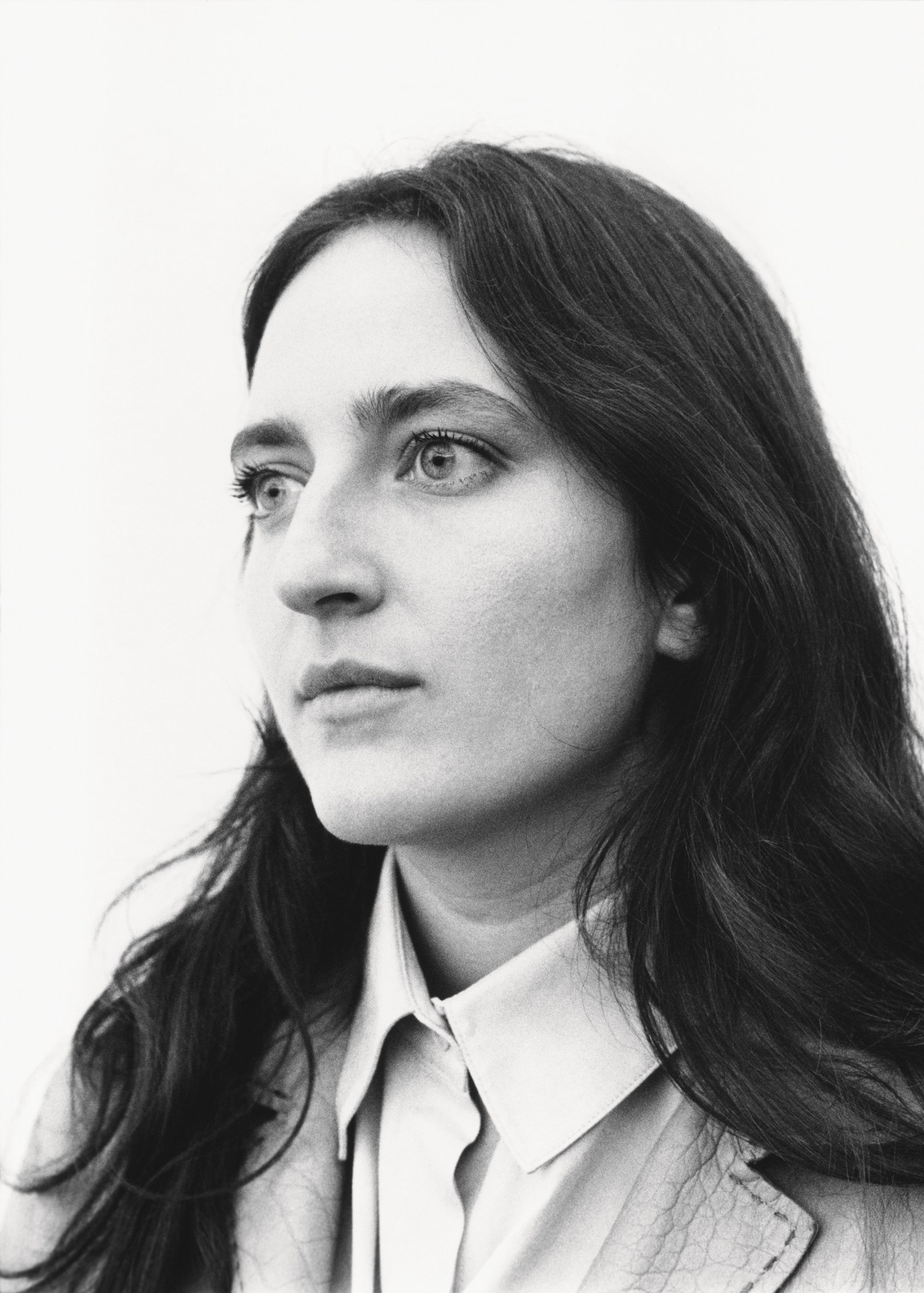
Olivia Erlanger
How would you describe your work? Does consistency in theme legitimise a practice? Maybe it just makes it more palatable. Making art is a reflection of lived experience: complex, multifarious, evolving. The themes change and the form follows. What do you think are the most important things happening in the art world today? Dismantle the Patriarchy! I’m inspired by the solidarity and strength within the female network with projects like Not Surprised and ones outside of the world of art, like Time’s Up and #MeToo. Should art be political? Life is political. We live out our politics in the choices we make. An artwork is the result of a series of decisions by the artist. What’s the first art museum you ever went to? What can you remember about it? I’ve gone to the Metropolitan Museum of Art in NYC my whole life. In the Greek and Roman room there is a small fragment of a vessel that has some early graffiti on it. It translates as “Up yours Acanthe” — like a “fuck you” to a girl who spurned the writer.
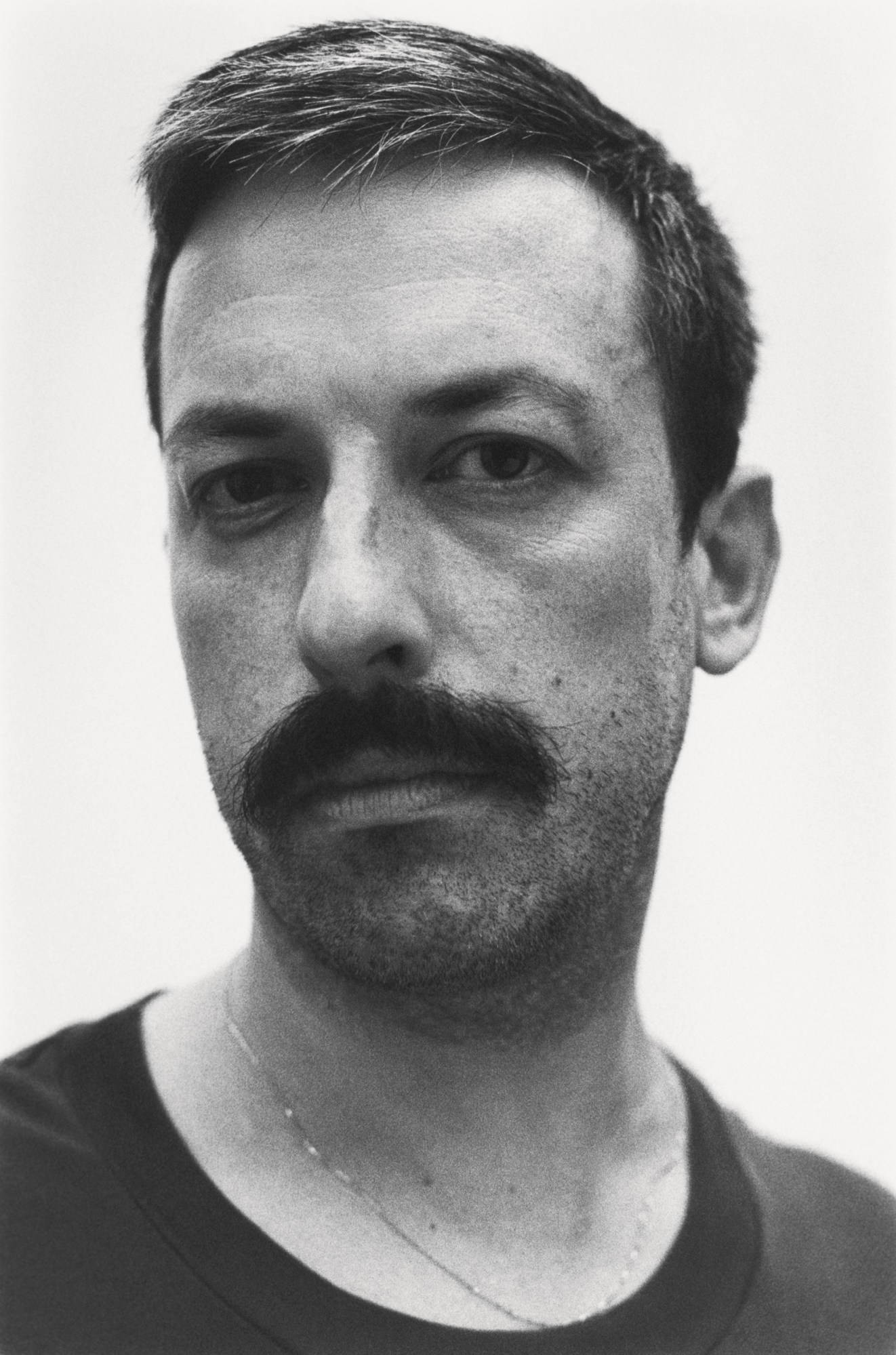
Richard Lockett
What made you want to be an artist? The art room at school was where I felt most comfortable. I went to a Catholic school and the art department was my sanctuary to express myself in a non-judgemental way. What was your earliest experience of art? I remember seeing a Duane Hanson show in the Royal Festival Hall Ballroom with my Dad as a teenager. He also took me to see Sensation at the Royal Academy in 1997. Art hit all the right notes for me, I was intrigued and bowled over by the possibilities and excitement of art. What does a day in studio usually look like for you? I gather everything that I need for that day in the morning, this is my inspiration time. It can take me awhile to get into what I am working on sometimes, therefore I will stay in the studio until I feel as though I have achieved what I want to achieve that day. Should art be beautiful? Art takes on many aesthetic manifestations today, a multiplicity of adjectives other than beautiful can be used to describe it. Should art be political? Should is a loaded word. I don’t think you can tell people when they make art that it should be anything. I think this closes down creativity. I also think that art should not shy away from the political. Politics affects everybody and I think that if art can speak in a political context it’s a great thing. Art is political even if it comes from a personal perspective.

Samuel Nicolle
What makes you happiest about making work? It gives me the ability to focus and explore the things that fascinate or bug me. What does a day in studio usually look like for you? Filling the blanks between cigarette breaks. Should art be beautiful? I feel like art always deals with beauty, whether addressing it or forgetting about it. Should art be political? I think expanding our borders of beauty is political. What would you like to change about the art world? I think we need to remember that we are not only talking to our peers. What do you think the most important things happening in the art world today are? The question of meaning in a world that seems to go down in flames.

Marie Karlberg
What made you want to be an artist? I lived in Paris ten years ago and was working for an arty fashion designer. At one of their openings they asked me to go to the middle of the room and to do a performance. I felt shy and embarrassed, but I did it anyway. I just started moving and reacting to some experimental music that was also being performed. So I did my first performance without even really knowing it. What’s the one piece of work you’ve done, that you really loved, but felt other people didn’t understand or like. I’m tempted to say everything. The theme of the issue is about breaking the establishment. Discuss… Who cares about the establishment! I’ve both organised and been in shows with friends that are having dialogues about art, and wanted to create a show about it with whose people who inspired the dialogue in first place. It has been more important to have people around me that I can be in communication with than, say, having a person with a gallery deciding if my art is worthy or not. What would you like to change about the art world? That artists wouldn’t define their own practice on their market success.
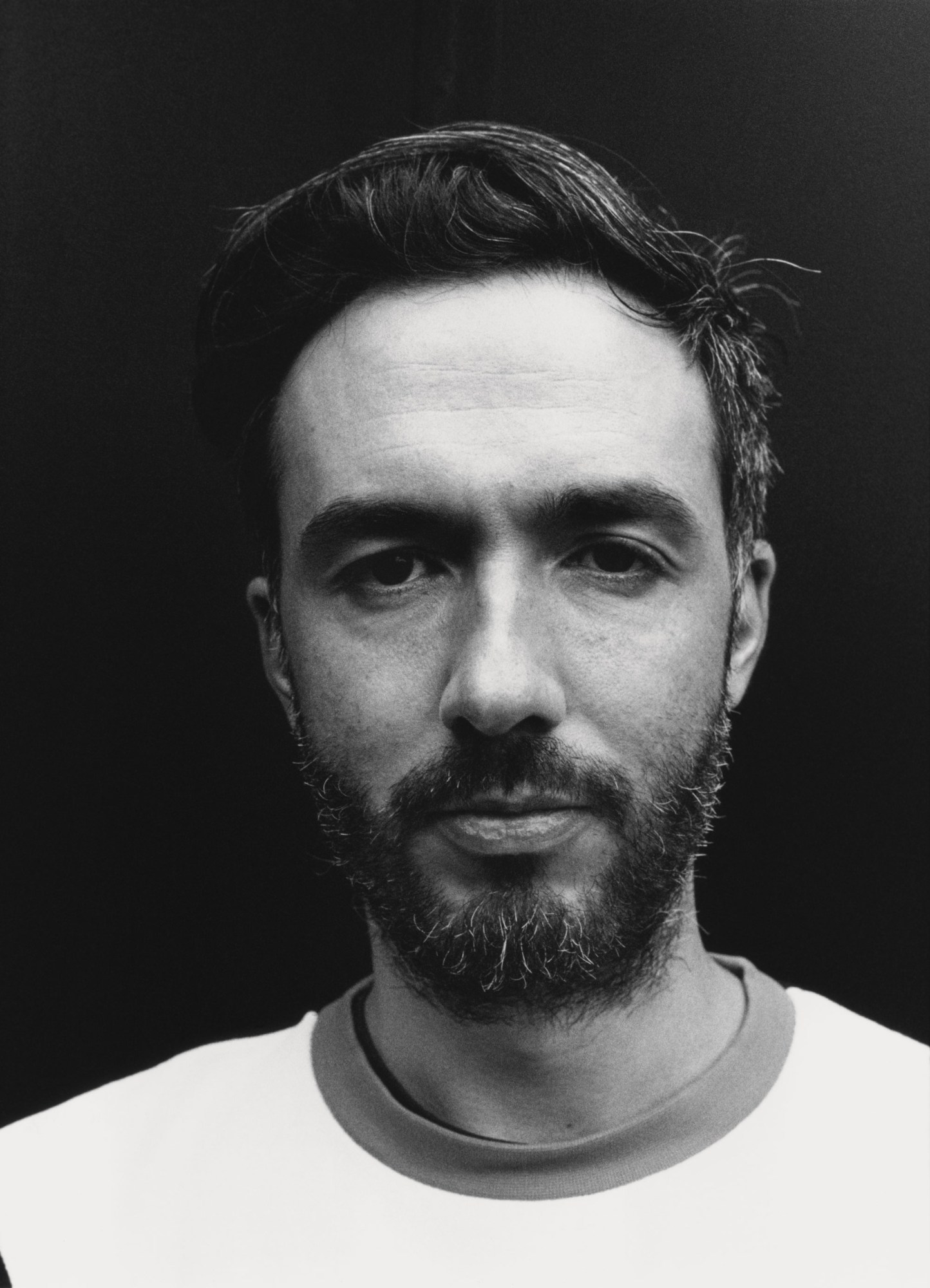
Oisin Byrne
What made you want to be an artist? I was a studious but very lonely teenager. Art and reading were where I took refuge. How would you describe the themes of your work? Intimacy. Boundaries. Shattered subjectivities. What do you think the most important things happening in the art world today are? Probably writing. People like Hito Steyerl, Katrina Palmer, Maria Fusco. Linda Stupart’s 2016 book, Virus, is by my bedside. The theme of the issue is about breaking the establishment. Discuss… Is there currently an establishment to break? It’s in freefall. Oprah for president! It’s tellytopia. Do you find non-creative people attractive? There is a line the theme song that Nina Hynes wrote for my film that goes “Don’t dismiss boring people, they’re dependable.” What’s the first art museum you ever went to? The Irish Museum of Modern Art. Venturing into a pitch dark gallery space and feeling my way forward, thinking I was feeling a sculpture, thinking I was supposed to be seeing with my hands, feeling the sculpture, and realising it was a gallery visitor. It was embarrassing. What does 2018 hold for you? Do you know yet? Does it excite you or scare you or both? I’m facing the void.
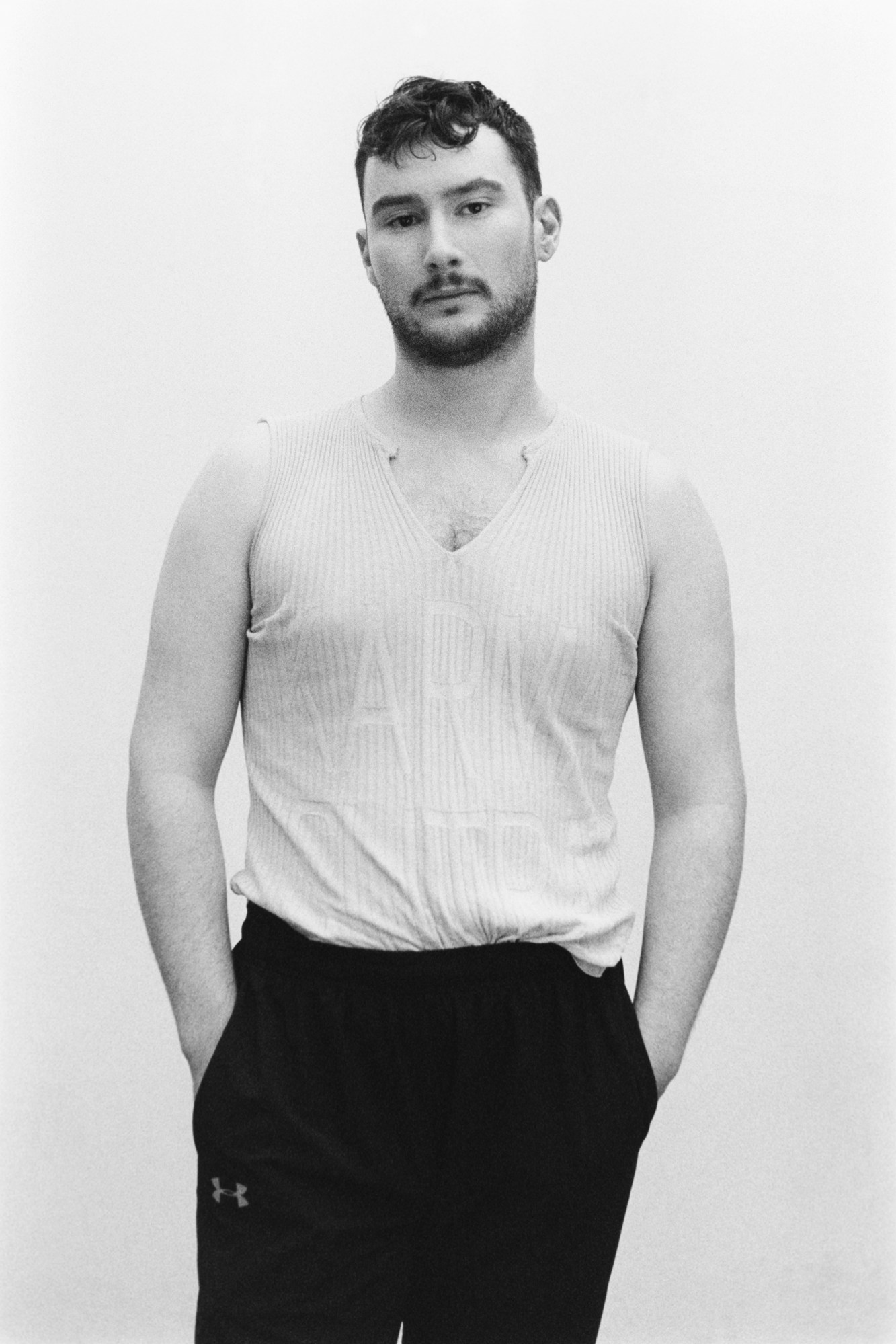
Alex Padfield
What made you want to be an artist? Show and tell. Love of things. Mood. What makes you happiest about making work? Gorgeousness, feelings, learning, teen diary entry catharsis. What was your earliest experience of art? Can we go to the gift shop? When someone asks you how do you describe your work, what do you say? “It’s kind of sort of maybe trying to touch on… but not.” I’m quite embarrassed of what I do. Should art be beautiful? Why should anything? I mean… What do you think the most important things happening in the art world today are? Honesty, empathy, curiosity and encouragement. The theme of the issue is about breaking the establishment. Discuss… I try to consider who’s criteria we are trying to meet and why? What’s it for, who does it serve and so on… Madonna, Human Nature style. What does 2018 hold for you? Do you know yet? Does it excite you or scare you or both? When I feel anxious, I remember and repeat “Optimism is as rational as pessimism.”
Credits
Photography Maxwell Tomlinson
Grooming Shiori Takahashi. Photography assistance Rory James Cole. Grooming assistance Megumi Sano.
